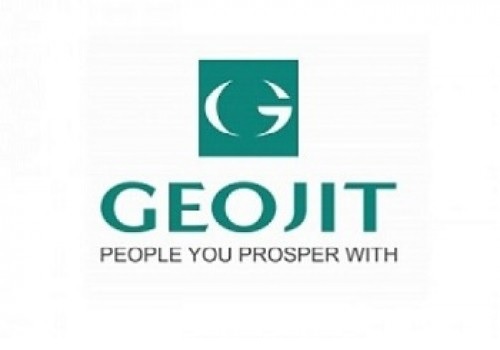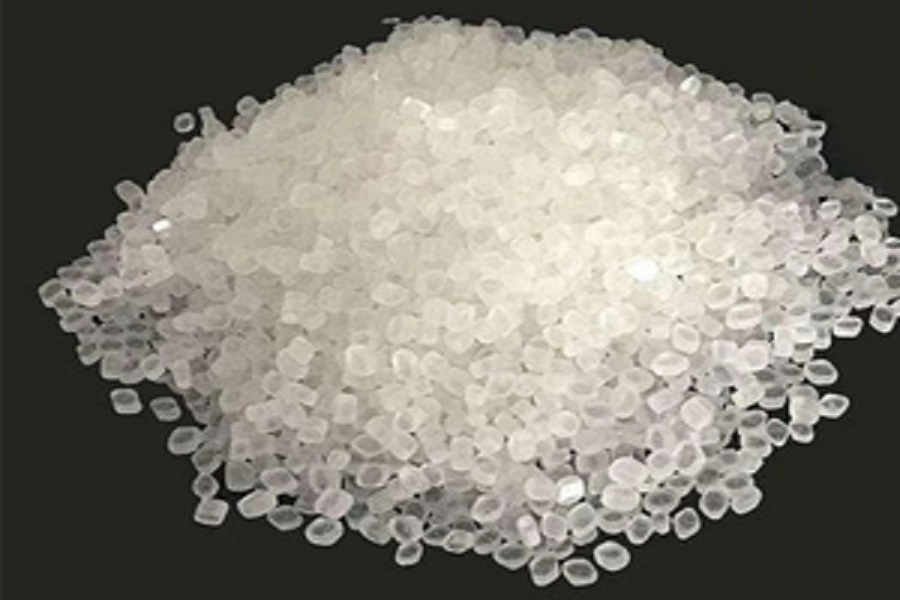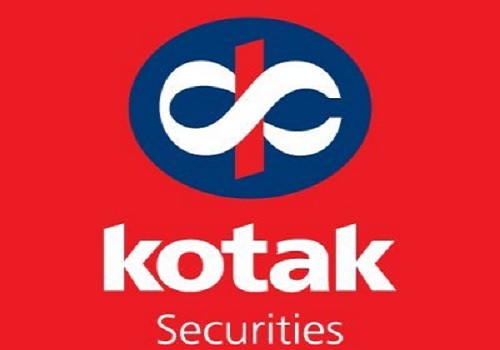Jeera trading range for the day is 20520-21500 - Kedia Advisory

Gold
Gold rose 0.62% to Rs.83,797, supported by safe-haven demand amid escalating U.S.-China trade tensions. The U.S. is witnessing a surge in gold imports from Dubai and Hong Kong due to high futures premiums over spot prices. China imposed retaliatory tariffs on U.S. imports, while the U.S. postponed 25% tariffs on Mexico and Canada for 30 days. U.S. economic data remained mixed, with Manufacturing PMI rising to 50.9 in January, signaling expansion. Federal Reserve officials suggested a cautious approach on interest-rate cuts, with market expectations for two cuts this year falling to 50%, as per the CME FedWatch tool. In the physical market, Indian gold demand remained weak as prices hit record highs, with dealers offering discounts of up to $35 per ounce. Trading activity in China and Hong Kong was subdued due to the Lunar New Year. Swiss data showed gold exports to China plunged 74% in December. Central bank buying remained strong, with Poland’s gold reserves increasing by 21 tonnes in November to 448 tonnes. India added 8 tonnes in November, lifting 2024 purchases to 73 tonnes, while China expanded reserves for a second straight month, bringing holdings to 73.29 million troy ounces. Technically, gold is in fresh buying mode, with open interest rising by 1.35% to 17,180 lots. Support is at Rs.83,195, with a break below testing Rs.82,585. Resistance is at Rs.84,120, and a move above could push prices towards Rs.84,435.
Trading Ideas:
* Gold trading range for the day is 82585-84435.
* Gold prices rose supported by safe-haven demand amid global trade uncertainties.
* Global bullion banks are flying gold to the U.S. from hubs like Dubai and Hong Kong to take advantage of the high premium.
* US President Trump said that he will pause the 25% tariffs on goods entering the United States from Mexico and Canada for one month.
Silver
Silver rose 1.54% to Rs.95,709, driven by safe-haven demand as U.S.-China trade tensions escalated. China announced retaliatory tariffs following President Trump’s 10% tariff on all Chinese imports, fueling investor interest in silver. On the supply front, the Silver Institute projected a fifth consecutive year of market deficits in 2025, with demand expected to outstrip supply. Industrial silver demand is set to reach a record high, driven by the green economy and electronics applications, offsetting weaker consumption in jewelry and silverware. Global silver demand is forecasted at 1.20 billion ounces in 2025, with industrial fabrication growing by 3% to surpass 700 million ounces for the first time. Meanwhile, silver investment demand is also expected to rise by 3%, driven by Europe and North America. Global silver supply is projected to rise by 3% to 1.05 billion ounces, marking an 11-year high. Mine production is expected to reach a seven-year peak of 844 Moz, while silver recycling is set to increase by 5%. Despite this supply increase, the silver market will remain in a deficit for the fifth year in a row, though narrowing by 19% to 149 Moz. Technically, silver remains in fresh buying mode, with open interest increasing by 2.75% to 25,557 lots. Support is at Rs.94,440, with a break below testing Rs.93,170. Resistance is at Rs.96,425, and a move above could push prices toward Rs.97,140.
Trading Ideas:
* Silver trading range for the day is 93170-97140.
* Silver rose as an escalating trade war between the US and China boosted demand for safe-haven assets.
* Fed’s Goolsbee said that a very lack of clarity requires a go-slower approach on interest-rate cuts.
* Fed's Collins says Fed can be patient on rates amid tariff uncertainty
Crude Oil
Crude oil rose 0.14% to Rs.6,343, as expectations grew that the U.S. would tighten sanctions on Iran, aiming to curb its oil exports. However, earlier price weakness was driven by escalating U.S.-China trade tensions, with China imposing levies on American crude, coal, and LNG. Meanwhile, OPEC+ confirmed plans to increase oil production from April, adding further pressure on prices. On the supply side, U.S. crude production declined by 122,000 bpd in November to 13.314 million bpd, down from October’s record high of 13.436 million bpd, according to the EIA. Additionally, U.S. crude inventories rose by 3.463 million barrels, marking the first increase in ten weeks. Gasoline stocks surged by 2.957 million barrels, exceeding the expected build, while distillate inventories fell sharply by 4.994 million barrels. The EIA revised its U.S. oil production forecast higher to 13.55 million bpd for 2025, with the Permian Basin continuing to drive output growth. Globally, oil and liquid fuel production is projected to average 104.4 million bpd in 2025, outpacing the forecasted demand of 104.1 million bpd, signaling a potential oversupply. Technically, the market is in short covering mode, with open interest declining by 1.69% to 5,248 lots. Support is seen at Rs.6,214, with a break below likely testing Rs.6,086. Resistance is at Rs.6,432, and a move above could push prices toward Rs.6,522.
Trading Ideas:
* Crudeoil trading range for the day is 6086-6522.
* Crude oil prices gained as expectations grew that the US would tighten sanctions on Iran.
* President Trump is set to restore "maximum pressure" on Iran, aiming to cut off its oil exports completely.
* OPEC and its allies upheld their existing oil production plans at a review meeting.
Natural Gas
Natural gas fell 1.44% to Rs.287.5, pressured by reduced LNG flows and President Trump’s suspension of tariff threats on Mexico and Canada. The tariff rollback eased concerns about costlier Canadian imports, which account for 9% of U.S. gas consumption. Meanwhile, U.S. natural gas output rose to 106.0 bcfd in February, up from 102.7 bcfd in January, when freeze-offs had disrupted production. However, recent daily output trends indicate a drop to 105.1 bcfd, down from 106.6 bcfd on January 31. Weather remains a key driver, with forecasts shifting from warmer-than-normal conditions through February 8 to colder-than-normal temperatures from February 9-19. The recent 321 bcf storage withdrawal exceeded expectations of 313 bcf, driven by severe cold. The largest declines occurred in the South Central (-136 bcf), Midwest (-83 bcf), and East (-61 bcf) regions. This was only the fourth time in history that withdrawals exceeded 300 bcf, reducing total inventories to 2,571 bcf—5.3% lower than last year and 4.1% below the five-year average. The EIA forecasts record highs for U.S. natural gas output and demand in 2025, with dry gas production reaching 104.5 bcfd and LNG exports hitting 14.1 bcfd. However, demand is projected to slightly ease in 2026. Technically, the market is in long liquidation, with open interest falling 9.92% to 11,079 lots. Support is at Rs.278.8, with a break below testing Rs.270.1. Resistance stands at Rs.294.1, and a move above could push prices toward Rs.300.7.
Trading Ideas:
* Naturalgas trading range for the day is 270.1-300.7.
* Natural gas fell as less gas flows to the nation's liquefied natural gas (LNG) export plants.
* Pressure also seen as President Donald Trump suspended his threat of steep tariffs on Mexico and Canada
* Average gas output in the Lower 48 U.S. states rose to 106.0 bcfd so far in February, up from 102.7 bcfd in January.
Copper
Copper prices rose 0.48% to Rs.839.85, supported by a temporary halt in U.S.-Mexico-Canada tariffs and higher Chinese copper imports. However, renewed U.S.-China trade tensions weighed on market sentiment after China announced new tariffs on U.S. coal, LNG, crude oil, and farm equipment, effective February 10. Despite trade uncertainties, China’s unwrought copper imports surged 17.8% YoY to 559,000 metric tons in December, as refiners replenished inventories amid rising orders. On the supply front, Chile’s copper output jumped 14.3% YoY in December to 566,547 metric tons, while Peru’s Las Bambas mine expects to produce 400,000 metric tons in 2025. However, Freeport-McMoRan warned of lower Q1 production, and Chile revised its long-term copper output forecast down to 5.54 million tons by 2034 from an earlier 6.34 million tons estimate. Meanwhile, Antofagasta's 2024 copper production edged up just 1% to 664,000 metric tons, below expectations. The global refined copper market showed a 131,000 metric ton deficit in November, deepening from 30,000 metric tons in October, according to ICSG. This reflects a supply-demand imbalance, as world refined copper consumption in November (2.47 million metric tons) outpaced production (2.34 million metric tons). Technically, the market is witnessing fresh buying, with open interest rising 0.32% to 6,278 lots. Support is at Rs.836.4, with a break below testing Rs.832.8. Resistance is at Rs.842.5, and a move above could drive prices towards Rs.845.
Trading Ideas:
* Copper trading range for the day is 832.8-845.
* Copper gained after US President and leaders of Canada and Mexico reached a deal to put tariffs on hold for at least a month.
* China slapped tariffs on U.S. imports in a swift response to new U.S. duties on Chinese goods, renewing a trade war.
* Copper output in Chile, increased 14.3% year-on-year in December to 566,547 metric tons.
Zinc
Zinc prices rose 0.26% to Rs.267.85, supported by continued supply concerns as global mined zinc production declined for the third straight year in 2024. The situation was exacerbated by a 7% drop in China’s refined zinc output, with lower processing rates forcing major producers to scale back production. Additionally, output from Alaska’s Red Dog Mine, the world’s largest zinc mine, is expected to slow in 2025, adding to supply constraints. Meanwhile, LME-registered zinc inventories remain at their lowest levels since February 2024, further supporting prices. The global zinc market deficit narrowed to 52,900 metric tons in November, compared to 65,400 metric tons in October, according to ILZSG. For the first 11 months of 2024, the zinc market faced a 33,000-ton deficit, in sharp contrast to the 312,000-ton surplus in the same period of 2023. In December, China’s refined zinc production increased by over 1% MoM, driven by maintenance recoveries and production expansions in Qinghai, Shaanxi, Gansu, and Inner Mongolia. Looking ahead, January 2025 production is expected to rise by 15,000 metric tons or nearly 3% MoM, with further increases expected in regions such as Hunan, Guangdong, Gansu, and Jiangxi. Technically, the market is under short covering, as open interest dropped by 4.13% to 3,253 lots. Support is at Rs.266.4, with a break below leading to Rs.264.8. Resistance is at Rs.269.2, and a move above could push prices toward Rs.270.4.
Trading Ideas:
* Zinc trading range for the day is 264.8-270.4.
* Zinc gains amid supply concerns as global mined zinc production fell for the third consecutive year in 2024.
* Output from the world’s largest mine, the Red Dog Mine in Alaska, is due to slow in 2025.
* Support also seen amid continuing decline of inventories in the LME-registered warehouses.
Aluminium
Aluminium prices rose 0.18% to Rs.253.9, supported by supply concerns stemming from the European Union’s plan to gradually ban Russian aluminium imports. The EU proposal includes a one-year phase-in period, with 275,000 metric tons exempted during this transition. Meanwhile, the U.S. Federal Reserve kept interest rates unchanged, stating that cuts would only come when inflation and job data support easing. The Chinese market remains closed for the Lunar New Year until February 5, limiting immediate demand signals from the world's largest consumer. Global primary aluminium production rose 3% YoY in December to 6.236 million tonnes, according to the International Aluminium Institute. In China, aluminium output hit a record 44 million tons in 2024, close to Beijing’s 45-million-ton cap set in 2017 to curb oversupply and meet carbon reduction targets. December’s aluminium production reached 3.77 million metric tons, up 4.2% YoY, despite a 1.7% MoM dip in daily output. However, higher costs have turned industry profits negative for the first time in three years, with average losses of 687 yuan per ton, according to Antaike. Japan's aluminium stocks also rose 13.2% MoM to 323,600 metric tons by the end of December, reflecting global inventory changes. Technically, the market is under short covering, as open interest fell 1.47% to 3,747 lots. Support is at Rs.252.1, with a break below leading to Rs.250.3. Resistance is at Rs.255.3, and a move above could push prices toward Rs.256.7.
Trading Ideas:
* Aluminium trading range for the day is 250.3-256.7.
* Aluminium gains as EU’s proposed ban on Russian aluminum raises market concerns
* Aluminium stocks at three major Japanese ports rose to 323,600 metric tons by the end of December, up about 13.2%.
* The main markets in China are closed for the Lunar New Year holiday until Feb. 5.
CottonCandy
CottonCandy settled 0.54% higher at Rs.53,780, supported by India's upward crop revision and firm demand from garment industries. The Cotton Association of India (CAI) increased its 2024-25 cotton production estimate by 2 lakh bales to 304.25 lakh bales due to higher output in Telangana (+6 lakh bales). However, North Indian production is expected to decline by 3.5 lakh bales, with Punjab, Haryana, and Rajasthan witnessing a 43% drop in kapas arrivals by November-end. Despite increased supply, demand remains robust, as cotton yarn prices in South India are rising due to strong export orders and higher consumption estimates of 315 lakh bales. On the global front, Brazil’s 2024-25 cotton production forecast was revised down to 3.79 million tonnes from 3.83 million tonnes due to reduced acreage in Mato Grosso. The WASDE report projects global cotton production to rise by 1.2 million bales to 117.4 million bales, driven by higher output in India and Argentina. Meanwhile, India’s December-end stocks stood at 85.04 lakh bales, while exports were estimated at 7 lakh bales, reflecting stable overseas demand. Technically, the market is under short covering, with open interest remaining unchanged at 268 lots. Support is seen at Rs.53,780, with a break below testing Rs.53,780 again. On the upside, resistance is at Rs.53,780, and a move above this level could drive prices towards Rs.53,780.
Trading Ideas:
* Cottoncandy trading range for the day is 53780-53780.
* Cotton gained as Brazil's 2024-25 cotton production forecast was revised down to 3.79 million tonnes.
* CAI has revised upwards its crop projections by 2 lakh bales from its earlier estimates.
* Global cotton production is projected to rise by more than 1.2 million bales to 117.4 million bales.
* In Rajkot, a major spot market, the price ended at 25208.95 Rupees gained by 0.02 percent.
Turmeric
Turmeric settled up by 0.47% at Rs.13,268, supported by concerns over lower yields and slow rhizome growth. Farmers report that new crop yields may be 10-15% lower, particularly in Nanded, due to small rhizomes and crop rot. However, the full extent of the loss will become clearer as harvesting progresses in key producing regions. While concerns about yield persist, demand remains weak, capping upside movement. The arrival of new crops has increased, with arrivals in Nizamabad and Hingoli rising significantly to 13,190 bags, up from 6,780 bags in the previous session. On the export front, turmeric exports rose by 9.80% between April and November 2024, reaching 121,601.21 tonnes, compared to 110,745.34 tonnes in the same period last year. However, November 2024 exports stood at 12,721.25 tonnes, reflecting a 20.18% decline from October 2024. Year-on-year, November exports surged by 48.22%, indicating steady overseas demand. Meanwhile, imports rose significantly by 101.80%, reaching 18,937.95 tonnes for April-November 2024, compared to 9,384.42 tonnes last year. However, November imports dropped 34.84% month-on-month, signaling reduced import demand. Technically, the market remains under fresh buying, with open interest increasing by 1.89% to 12,160 lots, indicating bullish sentiment. Support is seen at Rs.13,098, with a break below potentially testing Rs.12,928. On the upside, resistance is at Rs.13,394, and a move above could push prices towards Rs.13,520.
Trading Ideas:
* Turmeric trading range for the day is 12928-13520.
* Turmeric gains as new crop yields are expected to be 10-15% lower this year.
* Support also seen amid concerns over slow growth of rhizomes and low yield estimates persist.
* With the arrival of new crop likely to increase after Makar Sankranti, supply is expected to increase.
* In Nizamabad, a major spot market, the price ended at 13372.85 Rupees gained by 0.28 percent.
Jeera
Jeera fell by 1.37% to Rs.20,905, pressured by weak demand and ample stock availability. Farmers still hold nearly 20 lakh bags, but only 3-4 lakh bags are expected to be traded before the season ends, leaving a carry-forward stock of 16 lakh bags. The 2023-24 jeera production is estimated at 8.6 lakh tonnes from 11.87 lakh hectares, significantly higher than last year’s 5.77 lakh tonnes from 9.37 lakh hectares. Despite this, downside movement is limited due to an overall shortage of stocks and strong global demand. India remains the cheapest supplier of jeera, with prices at $3,050 per tonne, nearly $200-250 lower than Chinese cumin. This price advantage is expected to attract international buyers, particularly from China, Europe, and the Middle East. The ongoing geopolitical tensions in the Middle East have also contributed to higher export demand from Gujarat-based exporters. Jeera exports have surged 74.04% year-on-year, reaching 1,47,006.20 tonnes between April and November 2024, compared to 84,467.16 tonnes last year. However, November 2024 exports fell by 28.92% month-on-month to 11,555.56 tonnes, though they remained 42.67% higher year-on-year. Technically, the market is under fresh selling, as open interest increased by 7.8% to 2,571 lots. Support is at Rs.20,720, with a break below testing Rs.20,520. On the upside, resistance is at Rs.21,210, and a move above could push prices toward Rs.21,500.
Trading Ideas:
* Jeera trading range for the day is 20520-21500.
* Jeera dropped as demand is low and the current export business is being met from the available stock.
* However, only 3-4 lakh bags are expected to be traded by the end of the season, leaving a carry-forward stock of about 16 lakh bags.
* The current season is expected to have similar production levels as last year due to better crop conditions and good sowing.
* In Unjha, a major spot market, the price ended at 21486.55 Rupees dropped by 0 percent.
Views express by all participants are for information & academic purpose only. Kindly read disclaimer before referring below views



















